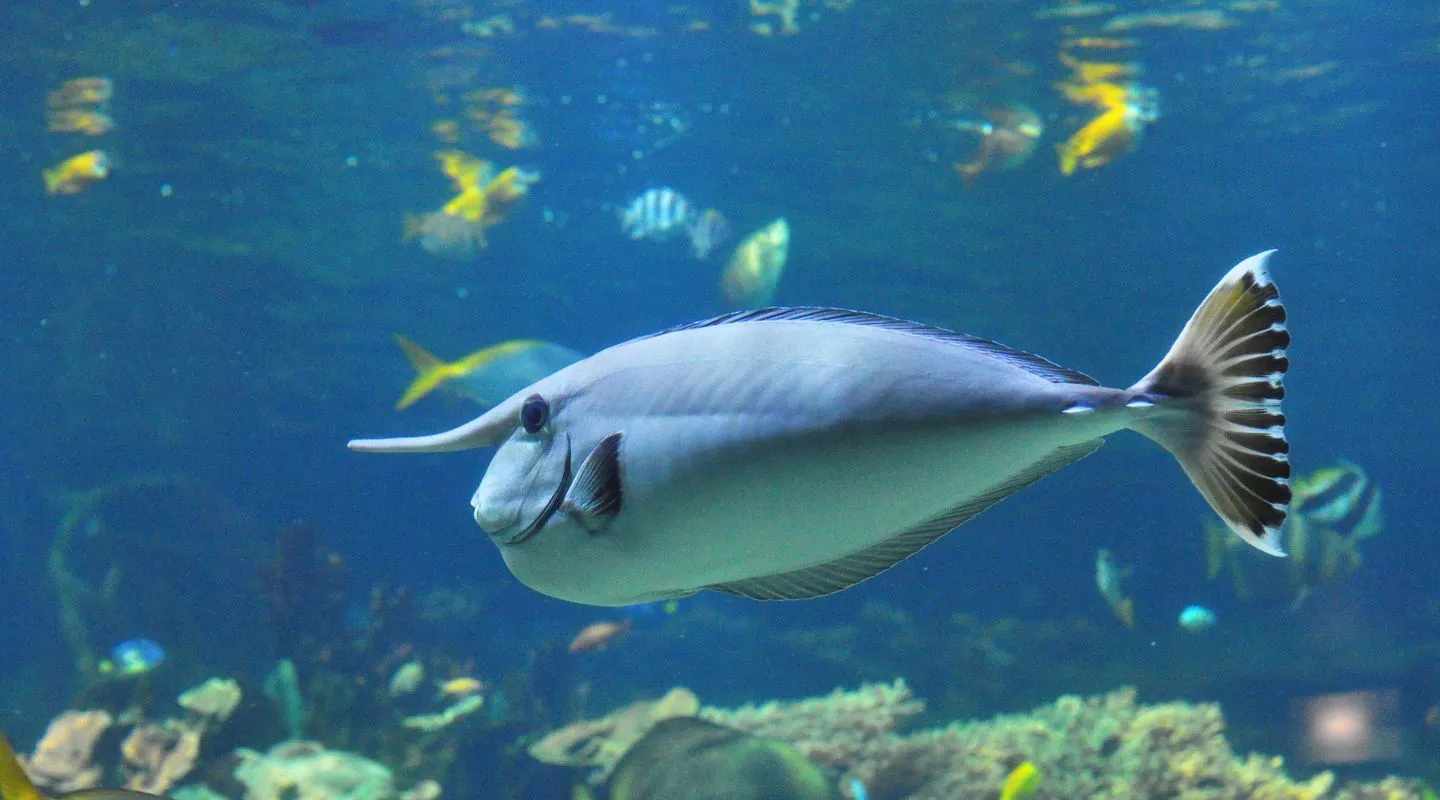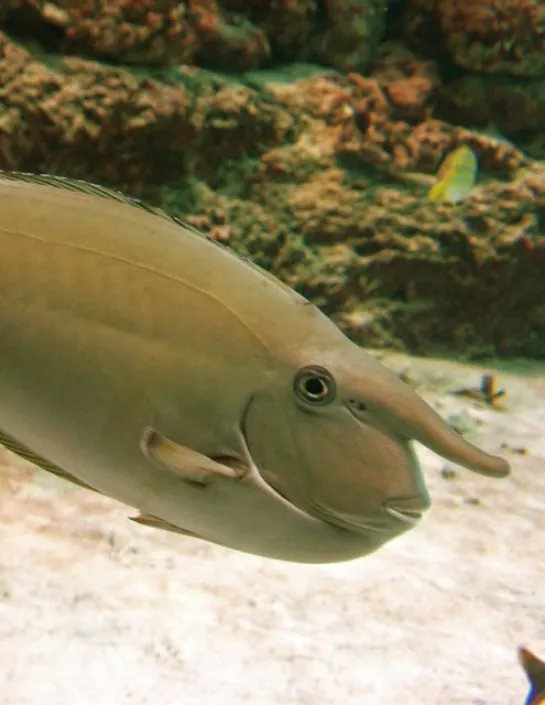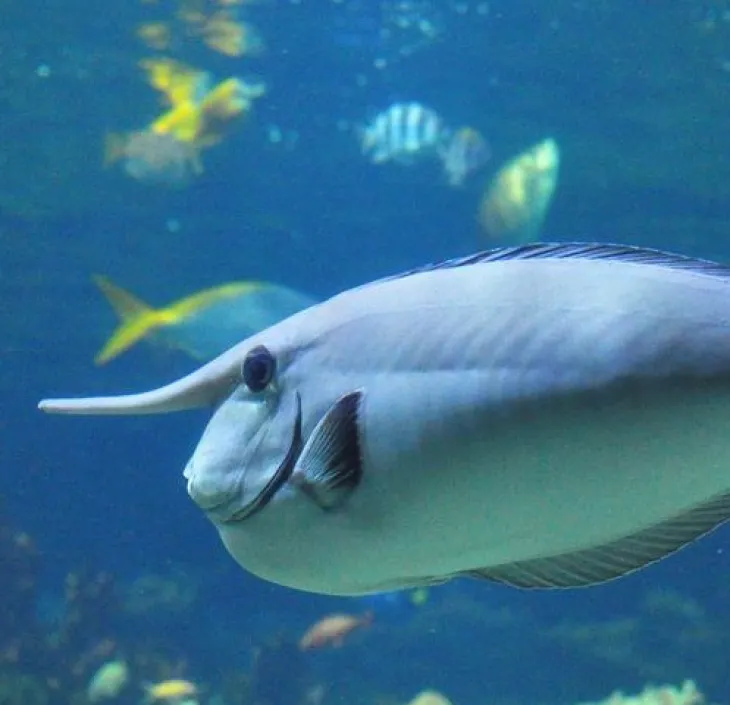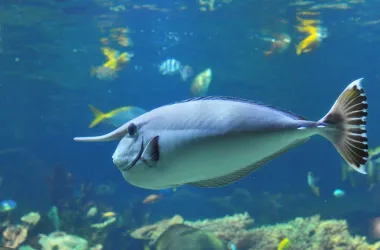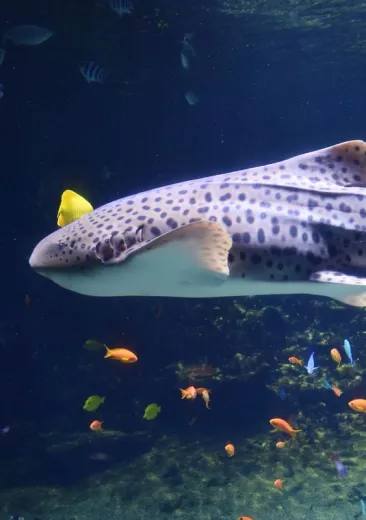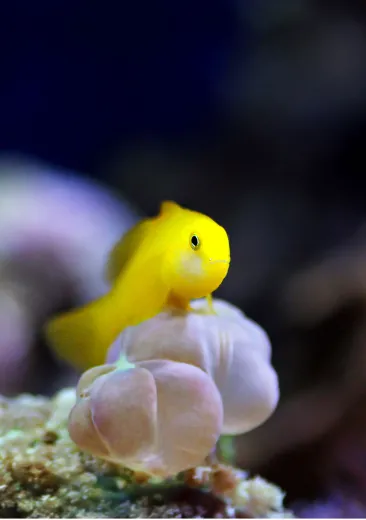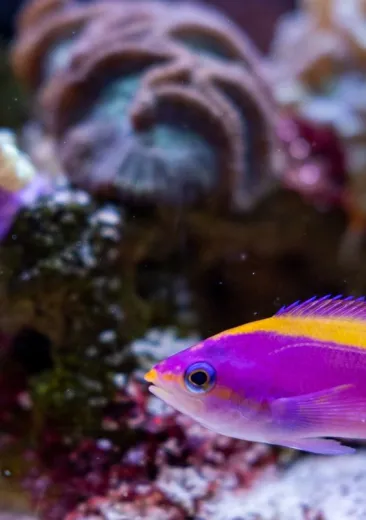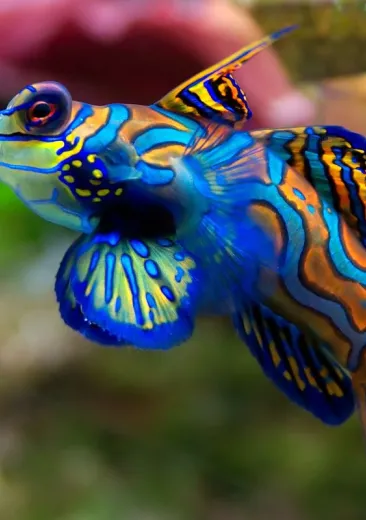Where is the animal to be found?
It is a reef fish and generally lives on the outer reaches of lagoons, on the outer reef slopes. It is the most representative unicornfish on the Great Barrier Reef and in the central Indian Ocean.
It is found in the Indo-Pacific area from the Red Sea and East Africa to the Hawaiian, Marquesas and Ducie Islands; north to southern Japan, and south as far as Lord Howe Island and in the central east to the Galapagos Islands.
How can it be recognised?
- With its frontal appendage that earns it the name of Whitemargin Unicornfish, this tropical fish with the Latin name Naso annulatus is easy to identify. This fish is distinguished by the presence of scalpel-sharp spines at the base of its caudal fin. These spines are covered with a toxic mucus and are used by the fish as a means of defence if attacked. However, it is not dangerous to humans.
- It is a member of the surgeonfish family, Acanthuridae, like the palette surgeonfish (Dory in Finding Nemo) or the yellow tang.
- With a slender egg-shaped body, the Whitemargin Unicornfish has a grey-brown to light grey coat with vertical lines that can change into dorsal and ventral spots. There are very few differences between males and females, the male is only slightly larger and the caudal spines are bigger.
- The size at sexual maturity is 25 cm.
What is distinctive about it?
It can be implicated in incidents of ciguatera because of its diet and can cause life-threatening poisoning in humans who consume it.
Threat and protective measure
The Whitemargin Unicornfish is classified as Least Concern by the IUCN. However, depletion of the coral reefs, which is the main habitat of the unicornfish, can have consequences for its population.
